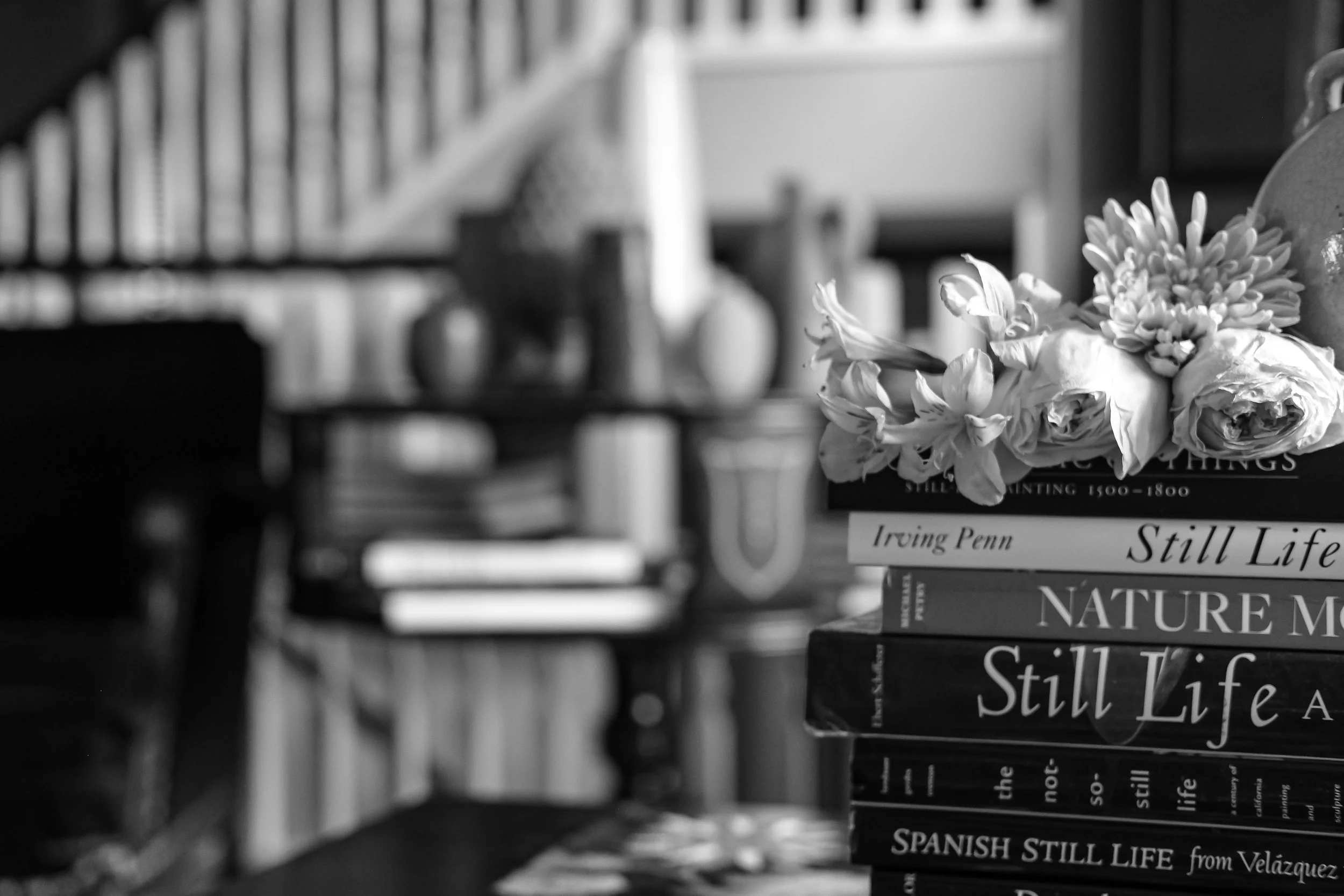Poetry of Still Life
If you’re a poet, you’ve likely taken a run at saying what poetry is. (I did myself in my book, Asking). W.H. Auden wrote: “Poetry is the clear expression of mixed feelings.”
When I’m in the presence of poetry, and this isn’t always through a proper poem per se, I feel as Rumi did having written one:
“This is how it always is
when I finish a poem.
A great silence overcomes me,
and I wonder why I ever thought
to use language.”
Hélène Cixous, one of the major influences of my creative life, said, “I call “poet” any wrier, philosopher, author of plays, dreamer, producer of dreams, who uses life as a time of “approaching.”” Cixous says that “the soul is the magic of attention” and “attention is magical matter.” Poets are attentive, they are attuned, they put unlike things together and a magic happens. It’s a way of thinking: a human with poetic intelligence is a kind of magic in a room that is almost always invisible, though. This is fine. We can pick each other out across a space, across time.
I have trouble explaining to people why it’s important to have poetry in their everyday lives. But in fact I think that it’s probably (after the basics) the most important element. When I talk about poetry I’m not thinking about it in some tangible form. There’s a passage by Teju Cole in his book, Blind Spot, where he talks about the filmmaker Tarkovsky who says that poetry is “the link that allows different kinds of excellence to understand one another.” If you’re interested in a thing, anything, it’s probably the poetic essence in that thing or activity to which you are drawn. Cole says, that “if everything else succeeds but the poetry fails, then everything has failed.” He talks about mystical relationships and the “inarticulable realms.” And honestly, we need more of that kind of language and not less.
There is an absolute clarity in poetic language done well. A complex idea mixed with feelings and nuance in such a way that just goes straight to your heart — pow!
And really, isn’t it a kind of mind-blowing thought: that poetry is how we can meet — one type of excellence will meet in the poetry of another. This makes perfect sense yes?
As someone who is interested in both poetry and still life, I’m always excited by poetry that gets still life, gets art. When it misses the mark, granted this is sad-making for me, but done well, what a thrill! And Charles Wright is one of those poets who gets it. From Appalachia, his poem “Basic Dialogue” begins:
"The transformation of objects in space,
or objects in time,
To objects outside either, but tactile, still precise...
It's always the same problem –
Nothing’s more abstract, more unreal,
than what we actually see.
The job is to make it otherwise.”
And this is in part a nod to Giorgio Morandi (who Wright often writes about) who said “there is nothing more abstract than reality.”
There is poetry (potentially) in a still life. Of course there are many poems lacking in poetry and same goes for anything one makes. The magical matter, the ineffable, inarticulable life juice of stuff, isn’t a given.
Anne Bogart talks about making art, any art, as well as making a life in art, in terms of still life: “We are debris arrangers. Equipped with what we have inherited, we try to make a life, make a living and make art. We are assemblers. We forge received parts into meaningful compositions."
She quotes Jasper Johns, and this is pretty much the through-line of my existence:
“Take something. Change it. Change it again.”
The question that I am obsessed with these days is by adrienne maree brown: “What is the next most elegant step?”
And this is sort of the way one composes a still life. You put something on a surface, you move it, you add things. You take away. You compose. You arrange the debris, the rubble. What is the next most elegant step? What is the step that taps into the magical matter? If you’ve composed a lot of still lifes, you know when you strike upon that magical combination. At least usually you do — sometimes it’s revealed to you later. With photography, I usually know when I’ve caught some primo light. I know when the sparks are flying. But it’s later when I upload the photo to my computer that I know for sure. And that’s a fun and exhilarating moment…until it’s not…which also happens. You just don’t always know. You hope! But you don’t know for sure. And then funnily, you think you’ve got some magic down and no one responds to it at all when you post it. Which is also fine, because maybe it is magic and it’s just not felt yet. Maybe it’s not magic to anyone else. That’s also fine. It was magic to you.
The thing about what brown says about the elegant next step is that it “acknowledges what is known and what is not known.” And this is also very like the still life process: you compose into the unknown.
It’s also a bit like this blog post: I’m just trying to make the excellent link between still life and poetry. But I think it’s there without me nattering on about it. Or maybe it’s something I need to write more about, longer, elsewhere. And probably will.
Lastly, my usual Beauty School mention. Click here:






